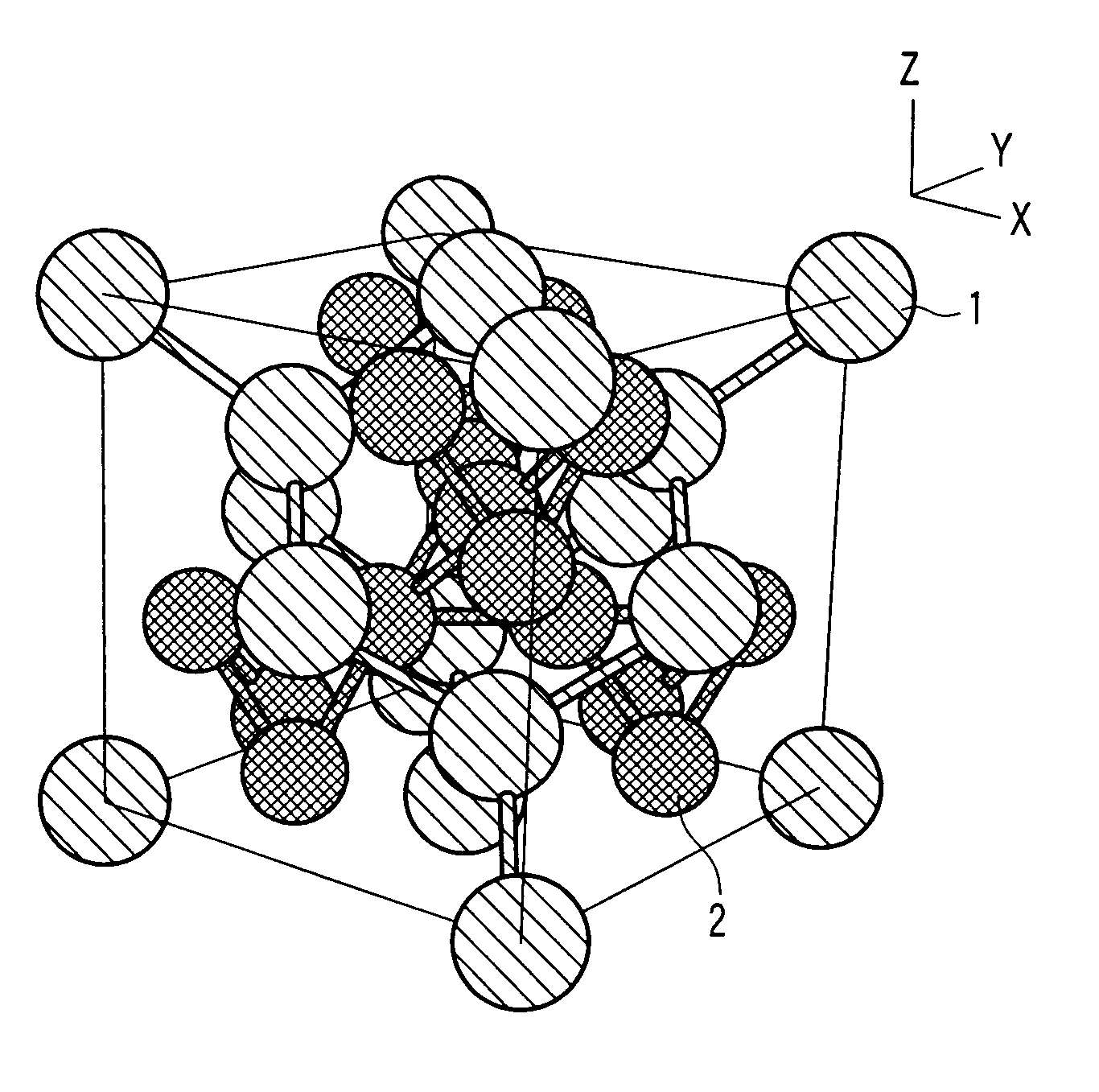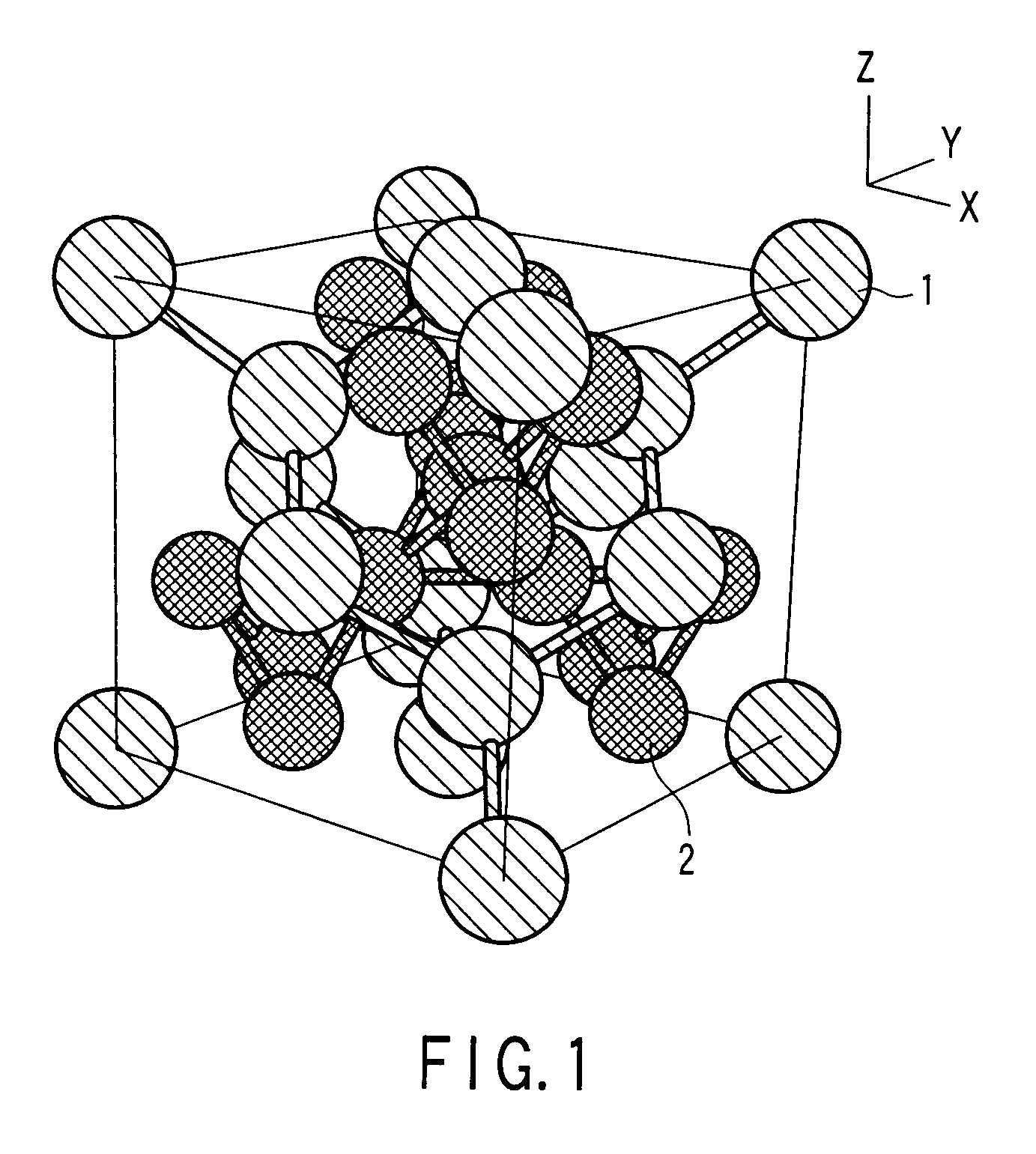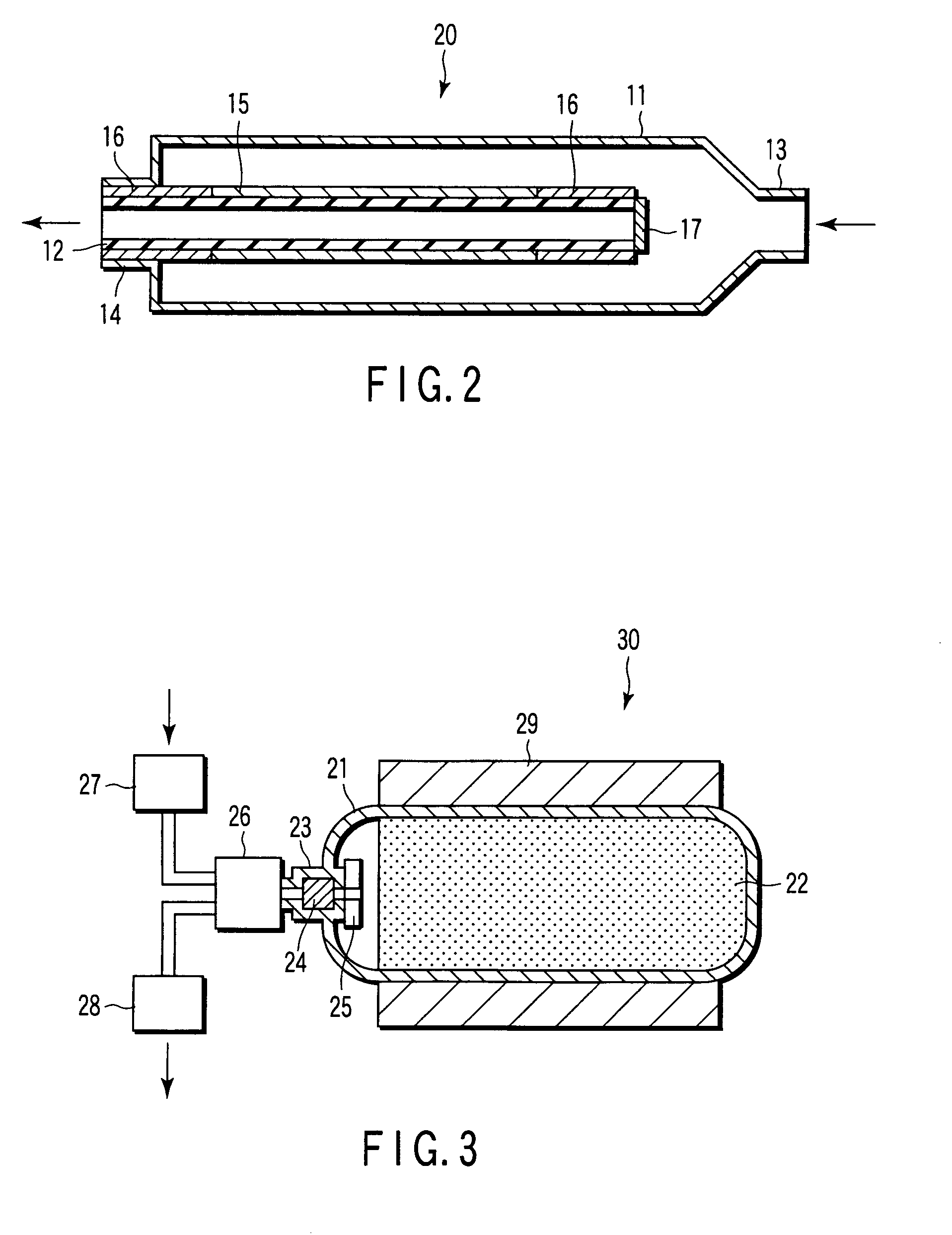Hydrogen occlusive alloy, hydrogen storage film and hydrogen storage tank
a hydrogen storage film and alloy technology, applied in cell components, packaging goods types, transportation and packaging, etc., can solve the problems of hardly functioning as hydrogen storage materials and very little hydrogen release, and achieve excellent hydrogen occlusion and release properties
- Summary
- Abstract
- Description
- Claims
- Application Information
AI Technical Summary
Benefits of technology
Problems solved by technology
Method used
Image
Examples
first embodiment
[0025]A hydrogen occlusive alloy according to a first embodiment has a cubic structure and a composition represented by the following general formula (1).
(Mg1-XLX)(Ni1-Y-ZMYLiZ)m (1)
[0026]In the formula (1), element L is at least one element selected from the group consisting of Na, Cs, Ca, Sr, Ba, Sc, Ti, Zr, Hf, V, Nb, Ta, Y, La, Ce, Pr, Nd, Pm, Sm, Eu, Gd, Tb, Dy, Ho, Er, Tm, Yb, and Lu. When reduction in the cost of the alloy is considered, at least one element selected from the group consisting of Ca, Ti, Zr, V, Nb, Ta and Y is preferably used as the element L, more preferably any of Ca, Ti, Zr, and V. When the hydrogen release property is considered, it is preferable to use at least one element as the element L selected from the group consisting of Ca, Hf, Sr and rare-earth elements (Y, La, Ce, Pr, Nd, Pm, Sm, Eu, Gd, Tb, Dy, Ho, Er, Tm, Yb, Lu).
[0027]The range of the mole ratio X is 0
second embodiment
[0039]The hydrogen occlusive alloy according to the first embodiment can be formed into a film shape. The hydrogen occlusive alloy having a film shape can function as a hydrogen storage film which displays an excellent hydrogen occlusive and release property.
[0040]The hydrogen storage film may contain alloys other than the hydrogen occlusive alloy. The hydrogen occlusive alloy preferably occupies a volume of at least 70 vol % in the hydrogen storage film. When the percentage of the hydrogen occlusive alloy is less than 70 vol %, a different phase may be precipitated with a large amount, and the performance as a hydrogen occlusive material may be deteriorated.
[0041]The hydrogen storage film is explained with reference to FIG. 2.
[0042]FIG. 2 is a schematic cross-sectional diagram of a hydrogen separating device using the hydrogen storage film according to the second embodiment as a hydrogen separation film.
[0043]A hydrogen separating device 20 illustrated in FIG. 2 comprises a high-pr...
third embodiment
[0047]The hydrogen occlusive alloy according to the first embodiment can be used in a powder form. The particles forming the powder are not limited to a specific shape. For example, the particles may have a spherical shape or may be flakes. Powder of the hydrogen occlusive alloy can be used as a filling material for a hydrogen storage tank which exhibits an excellent hydrogen occlusion and release property. The filling material may contain alloys other than the hydrogen occlusive alloy. The ratio of the hydrogen occlusive alloy and the other alloys may be the same as that explained in the second embodiment.
[0048]The hydrogen storage tank is described with reference to FIG. 3.
[0049]FIG. 3 is a schematic cross-sectional view of the hydrogen storage tank according to a third embodiment.
[0050]A hydrogen storage tank 30 comprises a pressure vessel (pressure-resistant vessel) 21, and a hydrogen occlusive material 22 filled into the pressure vessel 21 and serving as a filling material. Pow...
PUM
| Property | Measurement | Unit |
|---|---|---|
| temperature | aaaaa | aaaaa |
| mole ratio | aaaaa | aaaaa |
| mole ratio | aaaaa | aaaaa |
Abstract
Description
Claims
Application Information
 Login to View More
Login to View More - R&D
- Intellectual Property
- Life Sciences
- Materials
- Tech Scout
- Unparalleled Data Quality
- Higher Quality Content
- 60% Fewer Hallucinations
Browse by: Latest US Patents, China's latest patents, Technical Efficacy Thesaurus, Application Domain, Technology Topic, Popular Technical Reports.
© 2025 PatSnap. All rights reserved.Legal|Privacy policy|Modern Slavery Act Transparency Statement|Sitemap|About US| Contact US: help@patsnap.com



